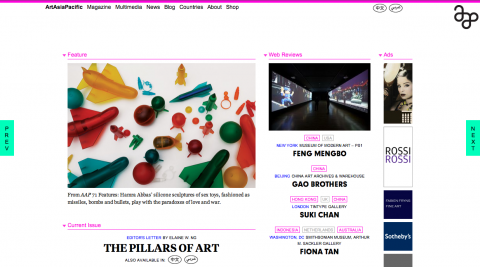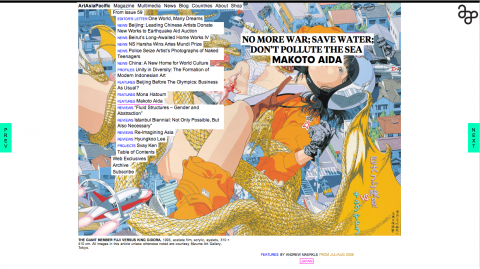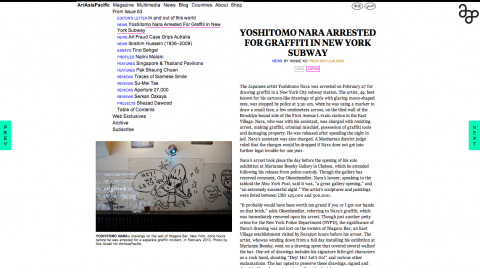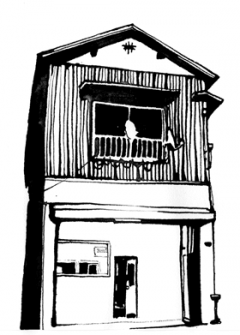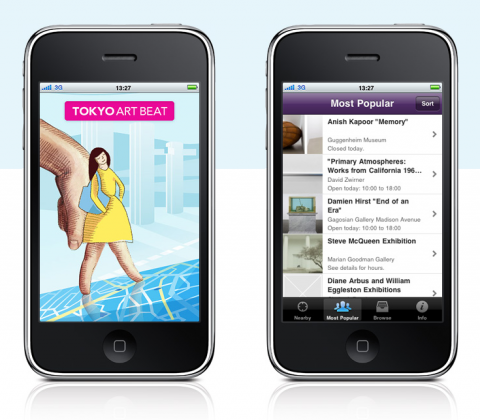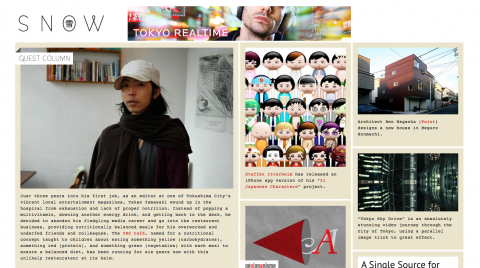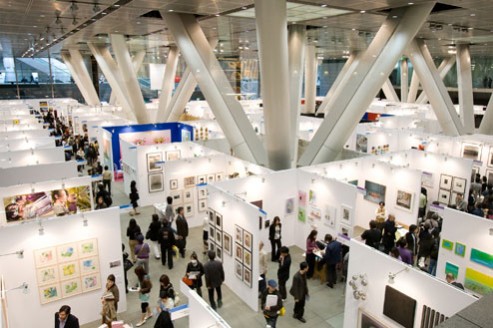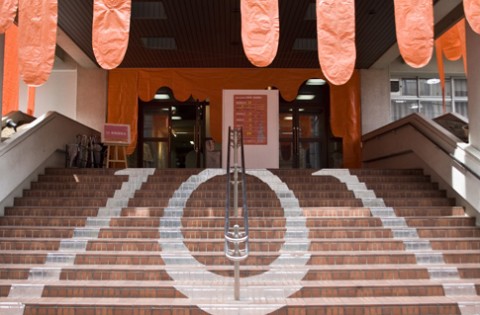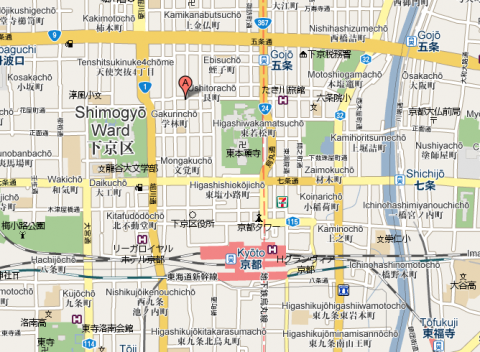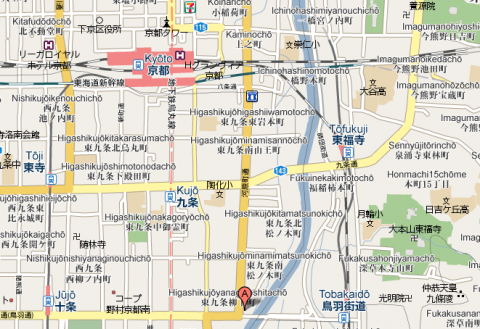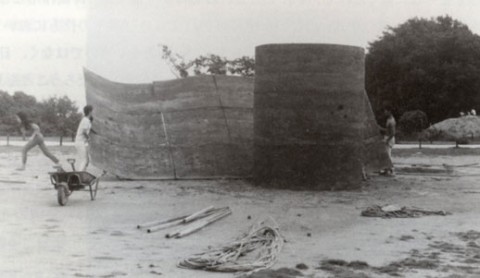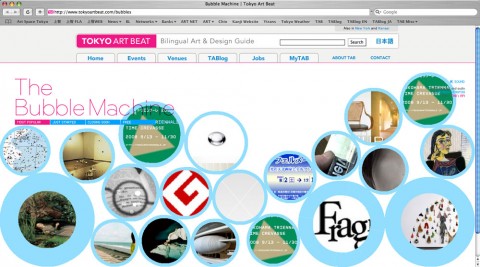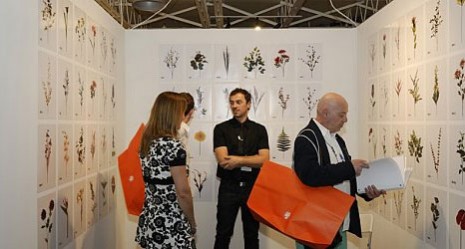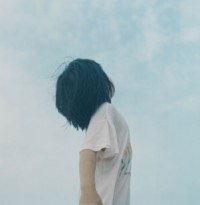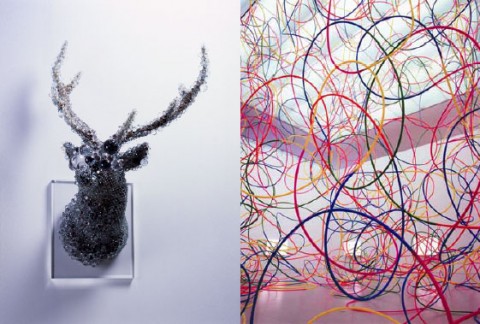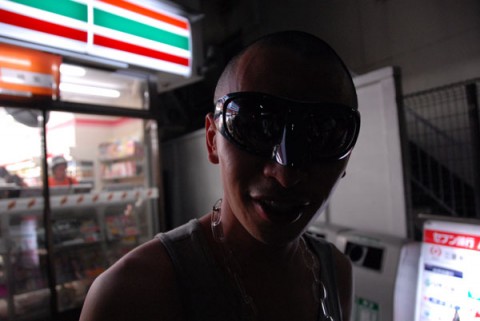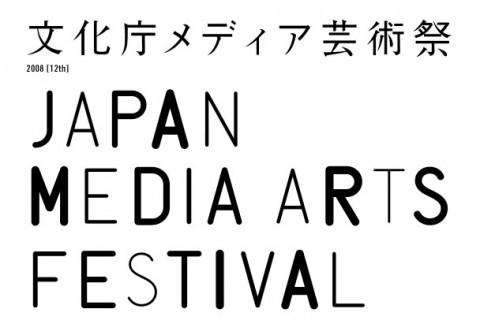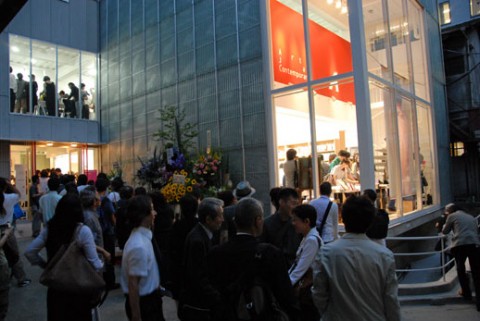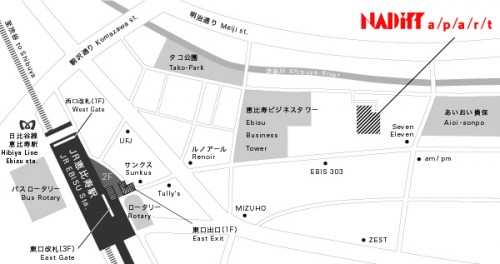News
ArtAsiaPacific Magazine relaunches its website
ArtAsiaPacific, the leading publication on contemporary art in Asia, the Pacific and the Middle East, relaunched its website this week.
The new site—designed by LinkedBy Air, the team behind the Whitney Museum site’s relaunch last year—makes dozens of past articles available for free, including many on contemporary Japanese art.
The bimonthly magazine will continue to release selected articles with each issue, and there will be regular uploads of web-exclusive reviews, video interviews, news reports and blog posts. Meanwhile, the archives, which currently go back to 2007, will grow over time.
Here is a compilation of links to the articles on contemporary Japanese art currently available on the site. As the 2011–2007 span of the archives happens to coincide with when I started contributing to the magazine from Tokyo and then moved to New York to become a full-time editor, you’ll notice that a chunk of them are my own!
Features
• Daido Moriyama: “Out of the Darkness” by Ashley Rawlings [AAP 70, Sept/Oct 2010]
• Taboos in Postwar Japanese Art: Mutually Assured Decorum by Ashley Rawlings [AAP 65, Sept/Oct 2009]
• Lee Ufan: Illusions and Interrelationships by Ashley Rawlings [AAP 62, Mar/Apr 2009]
• Makoto Aida: No More War; Save Water; Don’t Pollute the Sea by Andrew Maerkle [AAP 59, Jul/Aug 2008]
• Yoko Ono: The Artist in Her Unfinished Avant-Garden by HG Masters [AAP 58, May/Jun 2008]
Essays
• Institutional growth and diversification in the Tokyo art scene: “Living in A Beautiful Japan” by Roger McDonald [AAP 53, May/Jun 2007]
Reviews
• Ryoji Ikeda: “+/- [The Inifinite Between 0 and 1]” at the Museum of Contemporary Art, Tokyo, by Kenichi Kondo [AAP 64, Jul/Aug 2009]
• “Into the Atomic Sunshine” at Daikanyama Hillside Forum by Ashley Rawlings [AAP 61, Nov/Dec 2008]
• Daido Moriyama: “Retrospective 1965–2005 / Hawaii” at the Tokyo Metropolitan Museum of Photography by Ashley Rawlings [AAP 60, Sept/Oct 2008]
News
• Controversy over Takashi Murakami’s exhibition at the Château de Versailles by Jina Valentine [AAP 71, Nov/Dec 2010]
• Controversy over Seattle Art Museum guard altering a Yoko Ono work by Rebecca Close [AAP 66, Nov/Dec 2009]
• Yoshitomo Nara’s arrest for writing graffiti in the NYC subway by Hanae Ko [AAP 63, May/Jun 2009]
Nakaochiai Gallery Closing
I’m sorry to report that after six years of exhibitions, Nakaochiai Gallery is holding its closing party on November 27.
Having long been involved in art projects all over Tokyo, the owners, Julia Barnes and Clint Taniguchi, have decided to move their home to Mejiro and continue their art activities without a permanent gallery space.
The only other featured gallery to have closed in the two and a half years since Art Space Tokyo was first published is Project Space Kandada, run by the nonprofit artist collective commandN. However, like Nakaochiai they were not shutting down their operations but were relocating and expanding them elsewhere, at their new initiative, the 3331 Arts Chiyoda center.
When Craig and I chose the 12 spaces to feature in the book, we did try to choose those with longevity. After all, we were looking for some of the most architecturally and historically distinctive galleries and museums, so the fact that most of them are located in striking, often purpose-built buildings makes them less likely to relocate.
But it was inevitable that some would, and Project Space Kandada and Nakaochiai were the two that we suspected would be most likely to do so. But it’s important to remember that we also chose these spaces because of the fascinating neighborhoods they are in. We want our readers to continue to explore the secondhand bookstores of Kanda and the old-world residential backstreets of Nakaochiai. Keep wandering!
Go Walkies!
The tireless philanthropists at Art Beat have just launched their iPhone apps for Tokyo and New York, which means you will never get lost on your way to an exhibition again!
As with the main sites themselves, you can browse hundreds of events by area, media, opening nights and user-rated popularity, but all with the added benefit of GPS.
The NY app is going for a discounted rate of $0.99 until the end of February, while the Tokyo app is priced at $1.99.
As a sign of how in-demand this service is, for the past week the Tokyo app has been in the top five of all paid apps on the Japan iTunes store!
Meanwhile, TAB continues its donation campaign. They’re nearly at the 500,000 yen mark, but that’s only one-third of the way to their target amount. If you haven’t already, please show your support to this essential goldmine of information.
Keep the Information Flowing
Tokyo Art Beat recently launched an appeal for donations to help it stay afloat in 2010.
TAB is a nonprofit organization, so much of its activities are realized only through the generosity of dozens of volunteers. But the site simply cannot exist without revenue to support its core team of five paid staff. These are the people who keep TAB up to date, adding and translating information about the hundreds of art, design, architecture and fashion events taking place every week.
This cause hits close to home for me, because I know how much work these people put into keeping TAB running—I was a translator and editor there for nearly three years. On top of the event listings TAB’s staff works on commissioning and distributing limited-edition artist T-shirts, organizing events, and publishing a bi-monthly art map that you can pick up all over the city. These people live and breathe the Tokyo art scene and they want nothing more than to make it easier for you to find your way in.
I just made a donation and it was encouraging to see the donation bar jump up a decent amount within 24 hours, showing that there are other people out there who care. If you’re passionate about contemporary art in Japan, please, please keep the information flowing and give these brilliant people a boost.
Snow Magazine Launches
Following weeks of dropping hints and teasers on his blog, long-time Tokyo-based design writer and editor Jean Snow has finally launched his new online magazine.
Snow magazine offers news and guest-columns covering the cultural landscape of Tokyo and Japan, as well as some syndicated content from the Néojaponisme web journal and Paper Sky magazine. And it’s a joy to look at!
It’s a much-needed successor to PingMag, the popular online design magazine that ceased publication with the recession.
ART iT Relaunches Online
Back in April, Japan’s bilingual quarterly art magazine ART iT announced that it was suspending its print publication to move entirely online, and with a revamped website.
The new site isn’t yet complete, but it has launched with reports on the Venice Biennale. In addition to magazine-style coverage it has section of blogs by numerous artists and art figures in Japan, and a Facebook/Mixi-style social networking service.
One thing to note is that the URL has changed from www.art-it.jp to www.art-it.asia and unfortunately it seems the former site’s archives of exhibition reviews, interviews and features have not been transferred to the new site. Whatever happens, I hope all this material doesn’t get lost.
Setouchi International Art Festival – Call For Submissions
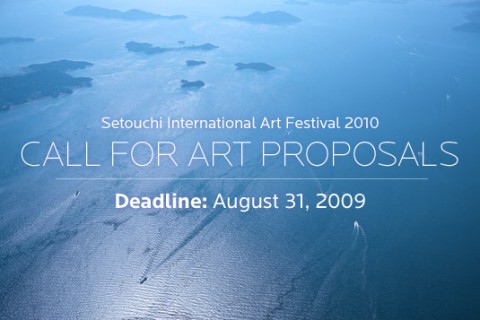
Since the early 1990s, a cluster of islands in the Seto Inland Sea have been developing into one of Japan’s major sites of contemporary art. Naoshima was the first, starting with its world-class, iconic museums Bennesse House and Chichu Art Museum, both designed by Tadao Ando.
The Art House Project has renovated old houses into site-specific installations by renowned artists including Rei Naito, James Turrell, Tatsuo Miyajima and Hiroshi Sugimoto. In recent years, nearby islands of Inushima and Teshima have become homes to a variety of art installations.
In 2010, the region will host the inaugural Seto International Art Festival, taking place from July 19 to October 31. The festival’s organizers are currently calling submissions, open until August 31.
Details are available on their homepage.
Art Fair Tokyo announces its 2009 line up.
Known for its mixture of galleries that handle antique, modern and contemporary art, Art Fair Tokyo has announced that in 2009 it will feature more contemporary galleries.
Of the 113 participants, 105 are from Japan (mostly Tokyo), while 8 are international. 24 are classified as antique-dealing galleries, 49 as modern art galleries, and 40 as contemporary art galleries.
In a new development, next year will be the first time AFT features a secondary venue dedicated to young contemporary galleries that have been established in the last 5 years. Called Marunouchi Tokia (@TOKIA) there will be 29 participants, 19 of which are from Japan (mostly Tokyo) and 10 of which are international.
Although the complete list of participants has been announced in an email press release, at present the Art Fair Tokyo homepage does not show this information. Presumably it will be updated in due course.
Due to the previous uncertainty over the future of 101Tokyo, most of the Japanese galleries that participated in 101Tokyo 2008 have already joined Art Fair Tokyo’s Tokia annex. There are few commercial galleries of substance left in Tokyo, so it is likely that 101Tokyo will take on a different character next year.
Although 101Tokyo 2008 had a 50-50 balance of Japanese and international galleries, it is fair to assume at this stage that in 2009 it will reappear as a more internationally oriented fair.
101Tokyo 2009 Due to go Ahead
After a period of uncertainty hanging over its future, it appears that 101Tokyo Contemporary Art Fair, which made a promising debut in 2008, is due to take place for the second time in April 2009.
The new team has as its Director, art consultant and writer Jason Jenkins, and as its Creative Director, Haruka Ito, independent curator and director of Magical Artroom. Show management is being conducted by the event production company Loufas Co. Ltd.
For more details of this initial announcement, visit the 101Tokyo homepage.
Tokyo and Osaka Galleries Open in Kyoto
Taka Ishii Gallery and Tomio Koyama Gallery are opening spaces in Kyoto. Located within walking distance of Kyoto Station, the new gallery building will open on November 20.
The second floor will be occupied by Taka Ishii Gallery, whose inaugural exhibition will be a solo show by Nobuya Hoki” (running until December 23) and Tomio Koyama Gallery, which will be holding a solo exhibition by Masahiko Kuwahara until December 27. On the first floor there will be a branch of Tomio Koyama’s TKG Editions, which sells limited edition artist multiples and prints, and from the new year, art editor Goto Shigeo (who is behind Tokyo’s G/P Gallery) will also run the Hanayacho Portfolio Room.
Opening reception for both galleries:
November 20 (Thursday) 18:00 - 20:00
Address: 483 Nishigawa-cho Shimogyo-ku Kyoto 600-8325
Tel: 03-5646-6050
Kyoto is reported to be home to an increasingly vibrant contemporary art scene with an aesthetic that differs notably from the work of Tokyo artists. As a common second stop for visitors to Tokyo, expanding into Kyoto makes sense for Tokyo galleries.
The Osaka-born Kodama Gallery, which also has a space in Tokyo, has relocated to the riverside area south of Kyoto Station, where they are currently holding an exhibition by Tomoki Kakitani.
Address: 67-2 Higashikujo Yanaginoshitacho, Minami-ku, Kyoto 601-8025
Tel: 075-693-4075
The Daiwa Foundation Art Prize
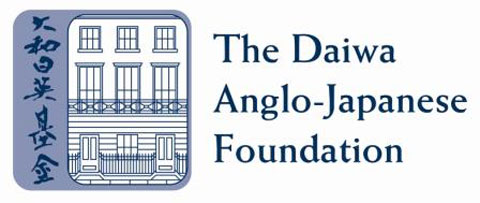
The Daiwa Foundation has announced a new art prize introducing British artists to Japan and offering one British artist a first solo show in Tokyo (in 2009). In addition to an exhibition, the winning artist will be given a period of support and introductions to key individuals and organisations in the Japanese contemporary art world.
Nobuo Sekine’s “Phase — Mother Earth” Under Reconstruction
 As of yesterday, Nobuo Sekine has been recreating his Phase — Mother Earth (1968) at Den’en Chofu Seseragi Park in West Tokyo.
As of yesterday, Nobuo Sekine has been recreating his Phase — Mother Earth (1968) at Den’en Chofu Seseragi Park in West Tokyo.
Created in October 1968 in the Suma Rikyu Park in Kobe, and consisting of a 2.2 x 2.7m cylindrical hole in the ground and an adjacent cylinder of earth of the same dimensions, this piece is one of the signature works of the Mono-ha movement of the late 1960s and early ‘70s. This is the first time Sekine is recreating the work, to commemorate 40 years since it marked a turning point in Japanese postwar art history.
However, unlike in 1968 when the work was made by Sekine and other artists of the Mono-ha group such as Koshimizu Susumu, who dug the earth out of the ground themselves, this time the earth will be excavated by a mechanical digger and coordinated by specialist engineers and only part of it will be made by hand. Sekine will, however, be present throughout to oversee the project.
The reasons for not doing it by hand this time are that there are water mains buried in the earth, and that part of the earth on site is suitable for excavation, meaning that specialist techniques are required to ensure the work is successfully recreated. In his autobiography Fukei no Yubiwa (Ring of Nature), Sekine wrote of how unexpectedly difficult it was to dig up the earth in 1968, and understandably now that he is in his sixties, he cannot work on the creation of the piece alone.
A few years ago at Wako University, students spent a month attempting to recreate Phase — Mother Earth, but when they removed the mold it turned out that the earth was not of the right consistency and the cylindrical form disintegrated immediately. At the Suma Rikyu Park, the earth had the consistency of pit sand, which mixed together with some concrete, made the work hold together.
Looking back, Sekine says that the realization of Phase Mother Earth in 1968 had a lot to do with unpredictably favourable circumstances, particularly the quality of the earth. They had received no permission from the park authorities as they dug up the ground and were lucky not to have been stopped before they had finished. Sekine suspects that had he applied to make Phase — Mother Earth beforehand, it may well have been turned down for concerns about quality of the earth, the potential risk to underground pipelines, or for health and safety regulations.
It’s interesting to think that had one of these favourable conditions not been present in 1968, one of the pivotal artworks in the early development of the Mono-ha movement, and one of the most iconic developments in postwar Japanese art history might not have come into being.
Construction work on Phase — Mother Earth will continue until October 31, and will be on display from November 1 to 9, from 9am to 5pm. Den’en Chofu Seseragi Park is directly opposite Tamagawa Station on the Tokyu Toyoko line.
For more information on the Mono-ha movement, you can read this article that I wrote for Tokyo Art Beat that introduces the main artists and their ideas.
Bubbles!
A couple of months ago, Tokyo Art Beat and its sister site New York Art Beat made their event data available to all in the form of APIs (Application Programming Interfaces). Anyone with any programming skills is free to build on in all manner of inventive ways.
A number of sites that make use of the TAB API have emerged but one of the most striking and enjoyable is The Bubble Machine. Events drop down in bubbles that move around and strum chords when you run the cursor over them, offering you a more playful way to plan your art-going than the regular list experience. And for those of you in Tokyo’s favourite other city, New York Art Beat has its own bubbles too.
GEISAI Miami Calls for Applicants
Takashi Murakami’s art fair GEISAI Miami, hosted by PULSE of Art Basel Miami Beach, is calling for applicants. Deadline October 15.
Kaikai Kiki is calling for entries for GEISAI Miami, the second U.S. edition of the art fair conceived by Takashi Murakami. GEISAI is an art fair model that allows artists to represent themselves in a professional art fair setting and present their work directly to an audience of collectors, art professionals and art enthusiasts. Artists of all nationalities without gallery representation are invited to apply, with no restrictions on the medium, at http://www.geisai.us. A jury of art professionals will review all applications and select a limited number of artists to receive free booths. Applicants must be able to present original artworks on-site in Miami during all five days of the fair. GEISAI Miami will be held Wednesday, December 3 through Sunday, December 7, 2008
Japanese Photographers at Paris Photo
From November 13 to 16, 2008, Paris Photo, the world’s leading fair for 19th century, modern and contemporary photography, will bring together 107 exhibitors (86 galleries + 21 publishers) from 19 countries at the Carrousel du Louvre.
This year, “to coincide with growing international interest in Japanese photography” Japan has been invited as guest of honour. 14 Japanese galleries will be taking part, bringing with them the following artists:
Nobuhiro Fukui (Tomio Koyama Gallery), Miyako Ishiuchi (Zeit-Foto Salon, Tokyo), Syoin Kajii (Foil Gallery), Ken Kitano (MEM Gallery), Akira Mitamura (The Third Gallery Aya), Keisuke Shirota (Base Gallery), Yuki Tawada, (Taro Nasu), and Nao Tsuda (Hiromi Yoshii).
After the Goldrush — Japan’s new post-bubble art and why it matters
Adrian Favell of UCLA will be holding a lecture and discussion about issues of commercialism and national branding in post-bubble Japanese contemporary art, on Wednesday September 17th, from 7 to 9pm at ZAIM in Yokohama. The talk is part of THE ECHO, an exhibition being held at ZAIM, described in the press release as “an alternative presentation of new young Japanese art during the Yokohama Triennale”.
The full press release for the event is posted on Tokyo Art Beat.
Terence Koh Calls for Participants in his Parade at the Yokohama Triennale
The other night, I randomly met Terence Koh (aka Asian Punk Boy) for the first time, at a rowdy house party (are relatively rare occurrence in Tokyo, given how close houses are packed together).
He’s one of the many artists arriving in Tokyo at the moment to get ready for the Yokohama Triennale starting on the 13th. There are many performances taking place over the opening weekend, and Terence was telling me about his plans to hold a silent procession of white-clad figures through the Yokohama bay area.
He’s just launched boybythesea.com, calling for participants… the instructions are simple.
(The more I hear about events like these, the more frustrated I am that my flight to New York leaves on the opening night of the Triennale...)
TOKYO’S PRESENCE IN BEIJING
One of the reasons we included Tokyo Gallery + BTAP in Art Space Tokyo was because of its pioneering role in developing the Beijing contemporary art hub of Danshanzi (798) when it opened Beijing Tokyo Art Projects in 2002.
Earlier this year, Mizuma Art Gallery opened Mizuma & One, and Wada Fine Arts opened Y Double Plus (Y++) in a new art area of Beijing called Chaochangdi.
Edan Corkill of the Japan Times wrote about the emergence of this area late last year; ART iT published an extensive photo report on it on their website in May; and most recently, in the Japan Times again, Olivier Krischer talked to Mizuma-san and Wada-san about their reasons for setting up shop in Beijing.
Japan Media Arts Festival Call For Entries
To all New Media Artists! You have until September 26 to submit work to the Japan Media Arts Festival, held at the National Art Center, Tokyo, in early 2009.
There are four categories — Art, Entertainment, Animation and Manga — and the Grand Prize is a neat sum of 600,000 yen. This year’s winning entry was Jean-Gabriel Periot’s 200000 Phantoms, a poignant photo-montage video that depicted the changes in urban space around the Atom Bomb Dome in Hiroshima over the past sixty years.
Meanwhile, on a less serious note aimed at New Media artists and the uninitiated alike, here is a reminder of how to define Interactive and New Media Art.
New Gallery Building Opens in Ebisu
Earlier this week, the NADiff art bookstore, which vacated its Omotesando premises last summer, finally reopened its doors in Ebisu. The new building also houses three galleries — Magical Artroom, G/P Gallery and Art Jam Contemporary — as well as a new bar/café, Magic Room. I posted a photo report of the extremely crowded opening party here, on Tokyo Art Beat.
New Gallery Building to Open in Ebisu
This is the latest chapter in Tokyo’s ongoing series of gallery relocations of the past six months. The building will house Nadiff bookshop, Magical Artroom and G/P Gallery.
Nadiff, Tokyo’s number one art bookshop, left its main premises in Omotesando last summer, and since then has been running only its museum shop outlets. The Roppongi gallery building closed in February this year, forcing its occupants to find new locations throughout the city, and news spread that Magical Artroom would be joining Nadiff in Ebisu. However, the opening date for this new building has been repeatedly postponed since then.
Magical Artroom was previously operated by a collective of Tokyo art world figures — collector and psychiatrist Satoshi Okada, art critic Kentaro Ichihara, and editor Shigeo Goto, with Haruka Ito running the office. Now, Haruka Ito is running the gallery, with Satoshi Okada as president and Masami Shiraishi (director of SCAI The Bathhouse) as a professional adviser. The former directors will also remain as advisers.
Shigeo Goto also announced recently that he will also be opening his own photography gallery in the same building, called G/P Gallery.
The new building will open on July 7, 7pm.
Art and Architecture Revamp Shibuya Station
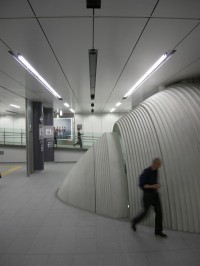 It’s not often that you get to experience the smell of a new subway station, or feel happy to miss several trains while you wander around the platform staring at the architecture. Beijing will be unveiling its new subway lines for the Olympics in a couple of months, but right now, the Fukutoshin Line, opened in Tokyo over the weekend, is the world’s newest.
It’s not often that you get to experience the smell of a new subway station, or feel happy to miss several trains while you wander around the platform staring at the architecture. Beijing will be unveiling its new subway lines for the Olympics in a couple of months, but right now, the Fukutoshin Line, opened in Tokyo over the weekend, is the world’s newest.
Designed to alleviate rush hour congestion on the western edge of the JR Yamanote Line, it runs from Shibuya up to Ikebukuro, and then up into Saitama Prefecture. In 2012 the current Shibuya terminus will connect to the Tokyu Toyoko Line, making it much easier to move between Saitama and Kanagawa prefectures.
The Shibuya Station end of the Fukutoshin Line has been designed by the master of concrete architecture Tadao Ando, who has integrated a large, vaulted ovoid structure into the center of the station — dubbed an “underground spaceship” — which makes for both a striking journey to and from the platforms, and allows for the free flow of air in and out of the station. Needing no fans for circulation, this is the world’s first naturally ventilated subway station.
Meanwhile, earlier this year the concourse between the JR Yamanote Line and the Inokashira Line was chosen as the permanent location for Taro Okamoto’s 30 meter-long mural The Myth of Tomorrow. The work has had something of a fraught history, detailed here on Tokyo Art Beat, and will finally settle into its permanent home in Shibuya in 2011.
Murakami sells big again
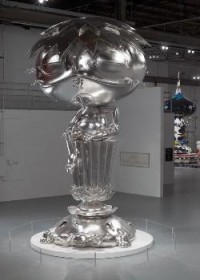 Following his record sale of Lonesome Cowboy at Sotheby’s on May 14, Takashi Murakami continues to see his major work sell out.
Following his record sale of Lonesome Cowboy at Sotheby’s on May 14, Takashi Murakami continues to see his major work sell out.
His LA gallery Blum & Poe, currently showing at Art Basel, the world’s largest modern and contemporary art fair, sold his 18.5 ft tall aluminum and steel sculpture Oval Buddha to an unnamed western European collector for US $8 million, not long after the fair opened. (Source: Bloomberg.)
Oval Buddha is a limited edition of three. It was due to be featured in the ©MURAKAMI exhibition currently taking place at the Brooklyn Museum (until July 13) but was reported to have been too big for the museum’s exhibition spaces.
For those who cannot afford $8 million, it is on view (until September 7) at the indoor public sculpture garden at 590 Madison Ave. facing 56th Street, open to the public free of charge.
Tokyo contemporary art market in flux
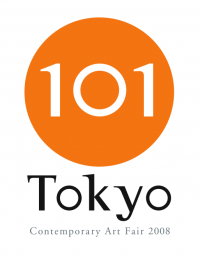 Today, 101Tokyo Contemporary Art Fair announced that it plans to expand for its next installment, upping the number of participating galleries to 60, from this year’s 28. Hence, it is calling for new, qualified directors to get in touch.
Today, 101Tokyo Contemporary Art Fair announced that it plans to expand for its next installment, upping the number of participating galleries to 60, from this year’s 28. Hence, it is calling for new, qualified directors to get in touch.
Having made sales of US $1 million, compared to the three-year-old Art Fair Tokyo’s US $10 million shows how much potential there is for the contemporary art market in Tokyo to take off if given the right platform.
Art Fair Tokyo currently occupies 3,000 square meters of the Tokyo International Forum each year, and is due to expand to 5,000 square meters in 2010. For next year, its Executive Director Misa Shin is looking at the possibility of holding a contemporary art annex to cater for the young commercial galleries that haven’t been able to make it into AFT so far.
We may never know whether AFT had this plan in mind before 101Tokyo appeared on the scene, or whether it’s a deliberate strategy to undercut 101Tokyo’s market before it takes root. Either way, a bit of competition in Tokyo’s art market can only be a good thing and I am looking forward to the coming months to see what kind of Tokyo Art Week takes shape for April 2009.
About & Community
A place to keep abreast of Art Space Tokyo related news, reviews, events and updates.
Art Space Tokyo is a 272 page guide to the Tokyo art world produced and published by Craig Mod & PRE/POST.
It was originally published in 2008 by Chin Music Press.
Current Tokyo exhibitions
Powered by Tokyo Art Beat
